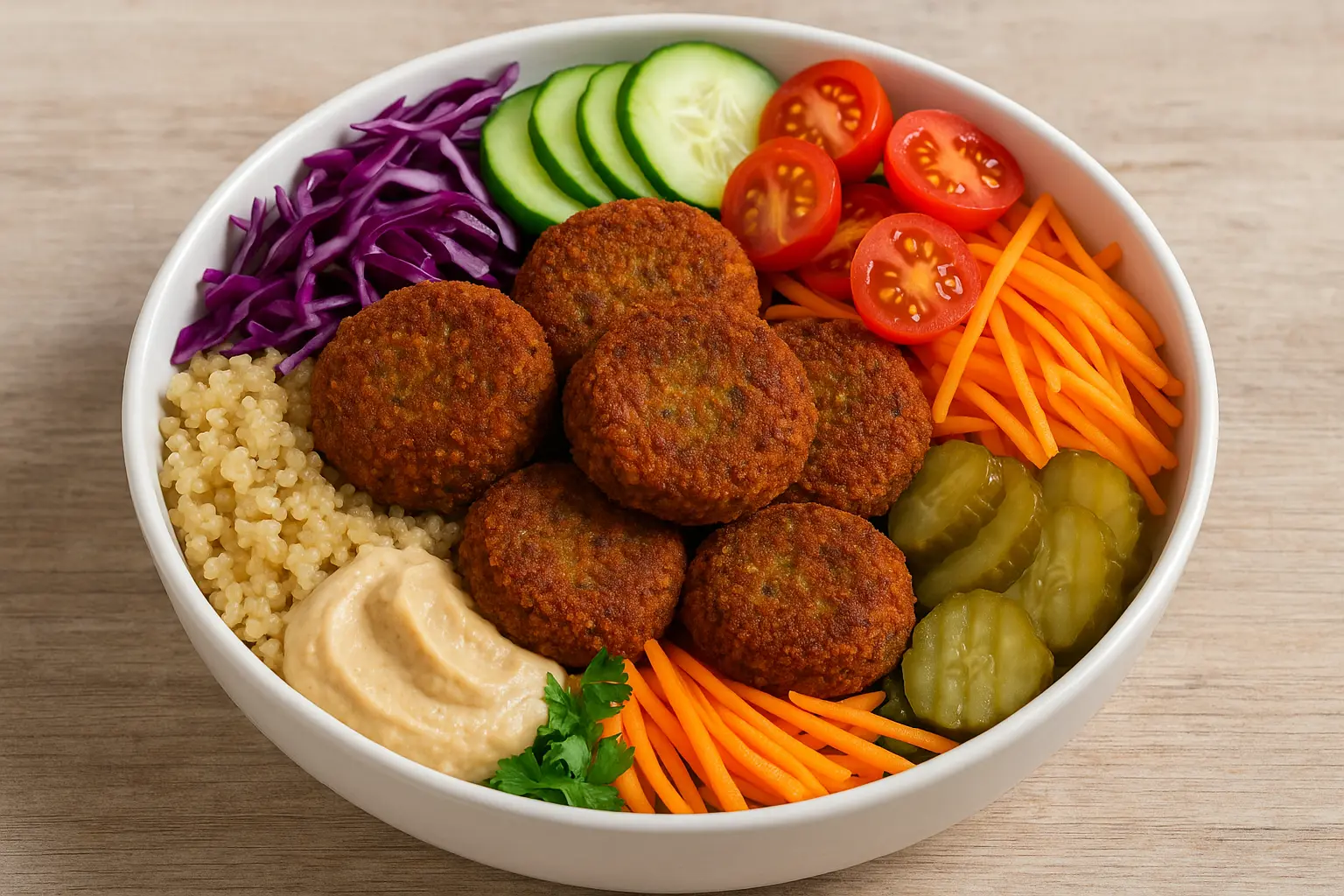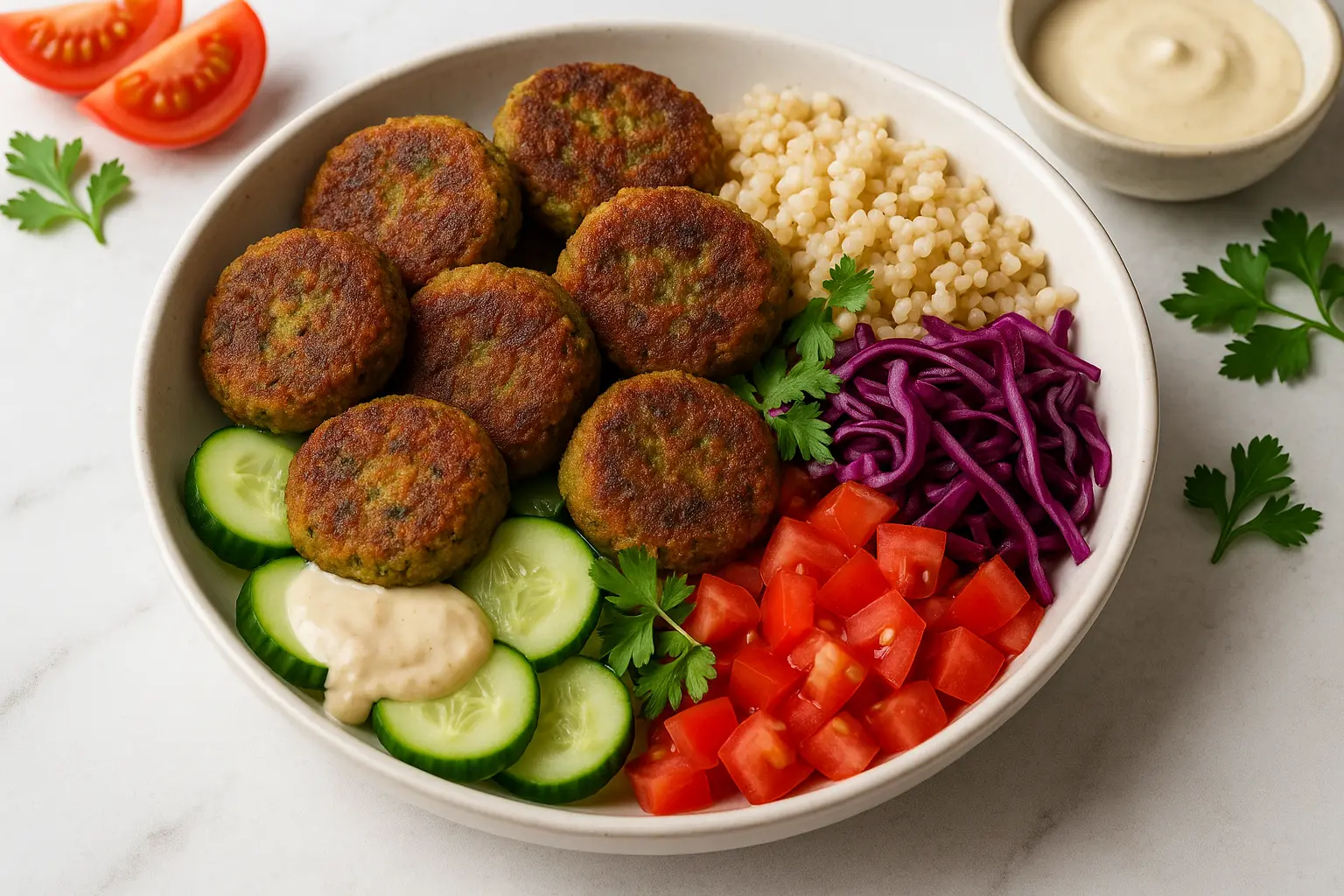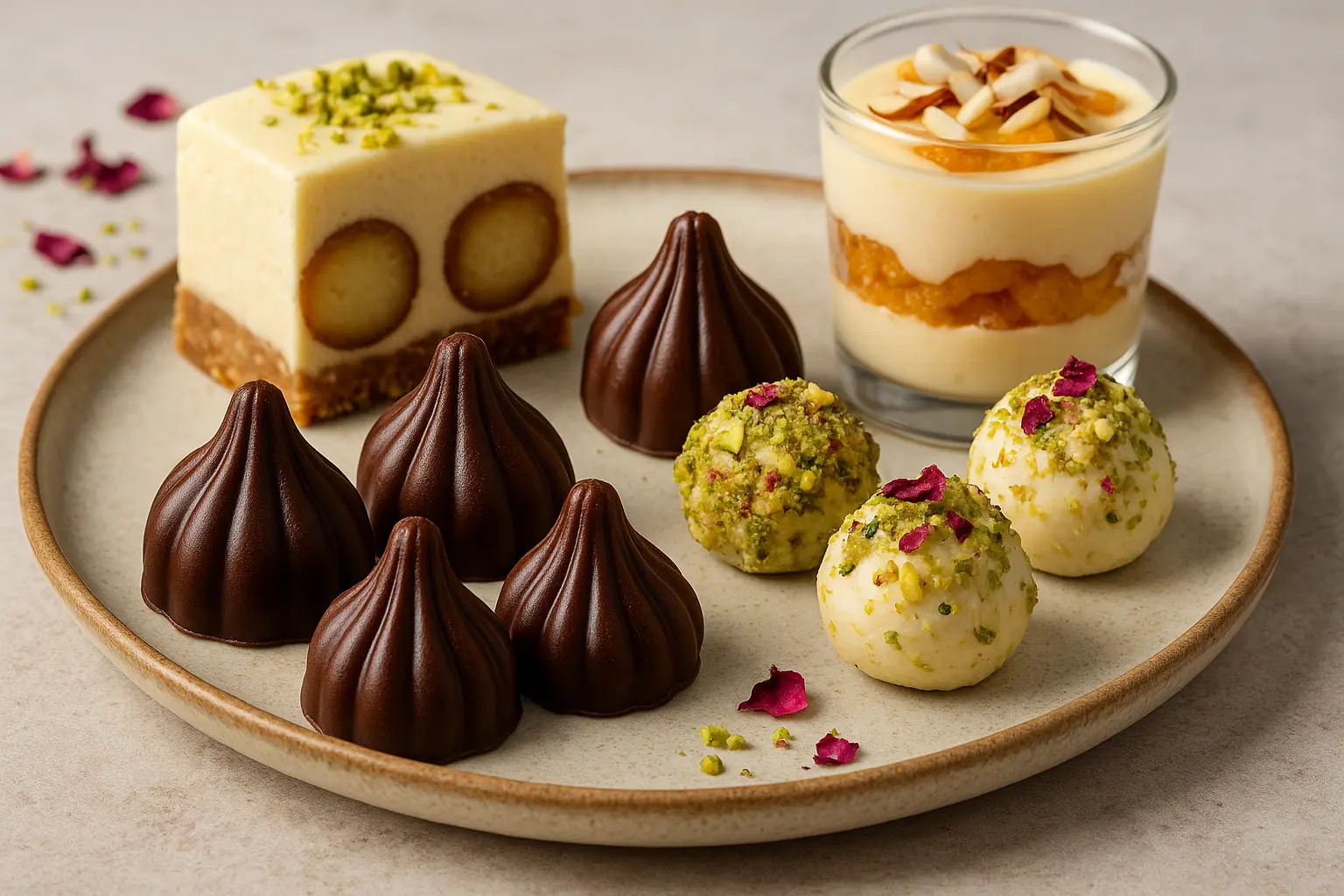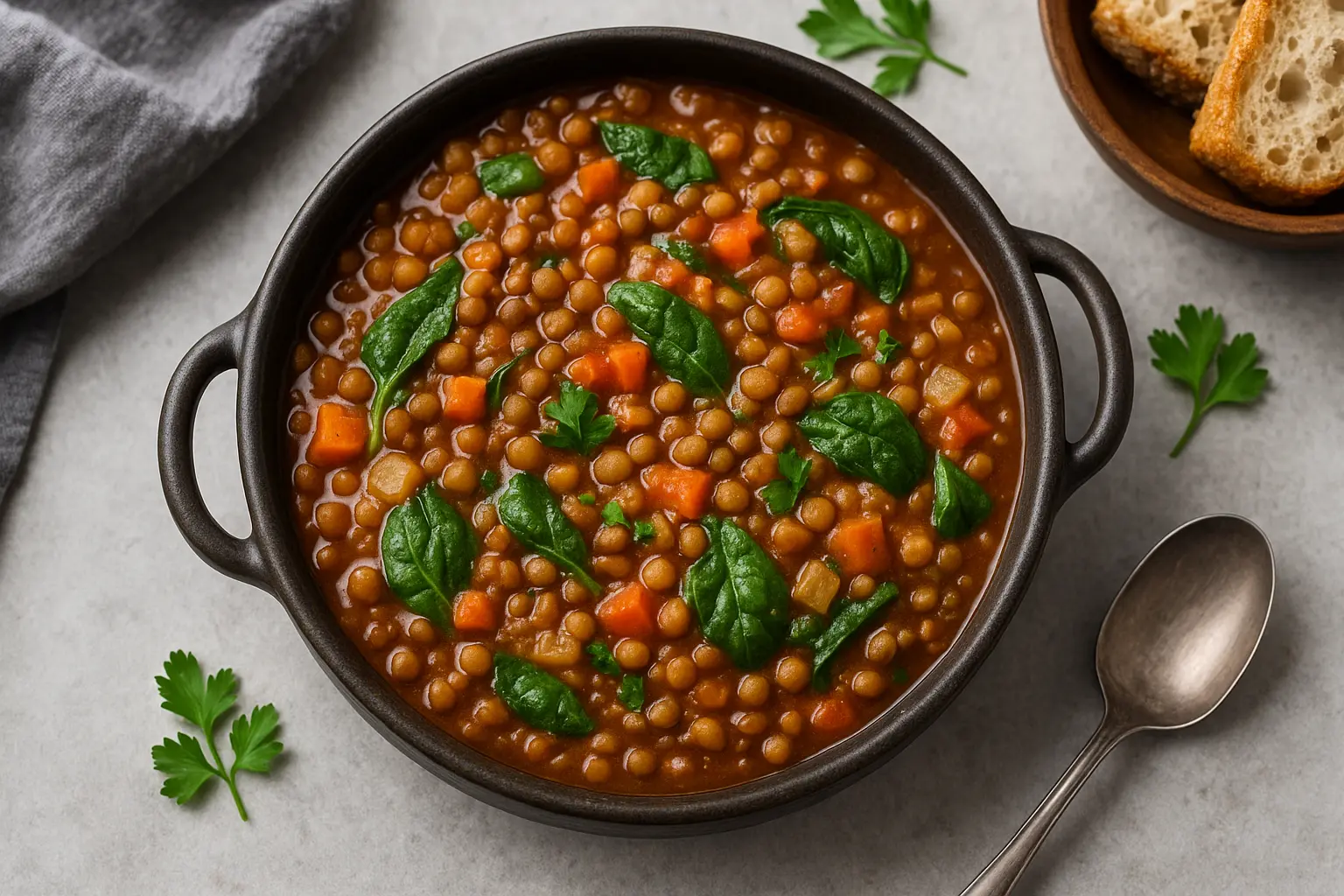Falafel has become more than just a Middle Eastern street food—it’s now a global culinary sensation. Traditionally made from chickpeas or fava beans, these golden, crispy patties pack a punch of flavor thanks to herbs, garlic, cumin, and coriander. When paired with fresh vegetables, grains, and creamy sauces, falafel bowls transform into a balanced, nutrient-dense meal.
What makes falafel bowls especially appealing is their versatility. They can be enjoyed by vegans, vegetarians, and omnivores alike. You can prep them ahead for lunch boxes, serve them as a quick family dinner, or elevate them for a party spread. In this guide, we’ll dive into everything you need to know: from authentic recipes and cooking methods to creative variations, meal prep hacks, and nutritional breakdowns.

A Short History of Falafel
Though today falafel is associated with Middle Eastern cuisine, its origins spark debate. Some believe it was invented in Egypt, using fava beans, and later spread to Israel, Lebanon, and Syria where chickpeas became the base. Over time, falafel became a beloved street food served in pita pockets with tahini and pickles.
Fast forward to today—falafel has taken on global variations. In New York, you might find falafel tacos. In Sydney, falafel Buddha bowls are trending. And in London, falafel wraps with harissa mayo are popular. What remains constant, however, is falafel’s crunchy exterior, soft interior, and vibrant herbaceous flavor.
Core Components of a Perfect Falafel Bowl
A well-rounded falafel bowl includes:
The Falafel – Golden brown patties made from chickpeas or fava beans, blended with fresh parsley, cilantro, garlic, and spices.
The Base – Grains like rice, quinoa, bulgur, or couscous provide substance.
Fresh Toppings – Crisp vegetables such as cucumber, tomatoes, lettuce, red cabbage, and radishes.
Pickles & Condiments – Pickled turnips, olives, and tangy pickles add brightness.
The Sauce – Tahini, hummus, or vegan yogurt dressings tie everything together.
Each component plays a role: falafel gives protein, grains provide carbs, veggies add fiber and micronutrients, while sauces deliver creaminess and depth.
Step-by-Step Recipe: Classic Crispy Falafel
Ingredients (for ~20 falafel balls)
1 ½ cups dried chickpeas (soaked overnight)
1 small onion, roughly chopped
3 garlic cloves
½ cup fresh parsley leaves
½ cup fresh cilantro leaves
2 tsp ground cumin
1 tsp ground coriander
½ tsp cayenne pepper (optional)
1 tsp salt
½ tsp baking soda
3 tbsp flour (chickpea flour preferred)
Neutral oil for frying (sunflower or canola)
Instructions
Soak chickpeas: Do not use canned chickpeas—they’re too soft. Soak dried chickpeas overnight in plenty of water.
Blend: In a food processor, pulse soaked chickpeas with onion, garlic, parsley, cilantro, and spices. The texture should be coarse, not pureed.
Add flour & soda: Mix in baking soda and flour until mixture holds together when pressed. Chill for 1 hour.
Shape: Form small balls or patties using wet hands.
Fry or bake:
Frying: Heat oil to 180°C and fry falafel until golden, 3–4 minutes.
Baking: Brush patties with oil and bake at 200°C for 25 minutes, flipping halfway.
Serve: Immediately serve with your chosen bowl ingredients.
Building the Ultimate Falafel Bowl
Suggested Bowl Assembly
Base: Quinoa, couscous, or brown rice
Veggies: Cherry tomatoes, shredded carrots, cucumber ribbons, red cabbage
Falafel: 3–4 per bowl
Extras: Hummus, baba ganoush, or tzatziki
Sauce: Drizzle with tahini lemon dressing
This balance ensures crunch, creaminess, freshness, and depth of flavor in every bite.
Variations of Falafel Bowls
Gluten-Free Falafel Bowl
Use chickpea flour or almond flour instead of wheat.
Pair with cauliflower rice for a low-carb base.
High-Protein Falafel Bowl
Add quinoa as a base.
Top with edamame, roasted chickpeas, or hemp seeds.
Air Fryer Falafel Bowl
Cook falafel in an air fryer at 200°C for 15 minutes.
Healthier but still crispy.
Mediterranean Fusion Bowl
Add roasted zucchini, olives, feta (or vegan feta), and a drizzle of olive oil.
Spicy Falafel Bowl
Add chili flakes to the falafel mix.
Top with harissa dressing.
Nutritional Benefits
Falafel bowls aren’t just delicious—they’re packed with nutrients:
Protein: Chickpeas and legumes provide plant-based protein.
Fiber: Helps with digestion and keeps you full.
Iron & Folate: Great for energy and blood health.
Healthy Fats: Tahini and olive oil add heart-healthy fats.
A standard falafel bowl (4 falafel, grains, veggies, and tahini) provides around 600–700 calories, 20g protein, and 15g fiber—perfect for a balanced lunch.
Meal Prep Tips
Make ahead: Falafel mixture can be refrigerated for 3 days before frying.
Freezing: Cooked falafel freeze well for up to 3 months.
Storage: Store assembled bowls without dressing to prevent sogginess.
Batch cooking: Double the recipe to meal prep for the week.
Falafel Bowls for Different Audiences
For Students: Budget-friendly, portable, and filling.
For Families: Kid-friendly if served with wraps or pita bread.
For Weight Loss: Bake falafel, use a salad base, and light tahini drizzle.
For Athletes: Add quinoa, avocado, and extra falafel for protein.
Cultural Significance & Global Adaptations
In Israel and Palestine, falafel is often enjoyed inside pita bread.
In Lebanon, it’s paired with turnip pickles and tabbouleh.
In Egypt, fava bean falafel (ta’ameya) is the classic choice.
In Western countries, falafel bowls are embraced as a trendy vegan option—appearing in food trucks, cafes, and even fine dining menus.
Cooking Methods Compared
Deep Frying: Authentic texture, crispy outside, fluffy inside.
Shallow Frying: Less oil, slightly less crisp.
Baking: Healthier, but texture may be drier.
Air Frying: Great middle ground—crispy and healthy.
Flavor Pairing Guide
Falafel pairs well with:
Fresh herbs: dill, mint, parsley
Sauces: tahini, zhoug (spicy green sauce), garlic yogurt
Roasted veggies: sweet potato, zucchini, eggplant
Grains: bulgur, couscous, farro
Accompaniments: pita bread, tabbouleh, fattoush salad
Common Mistakes & Fixes
Falafel falling apart: Mixture too wet → Add flour.
Falafel too dense: Over-processed → Pulse lightly.
Not crispy: Oil not hot enough or baked without enough brushing oil.
Bland taste: Not enough herbs/spices → Always add fresh parsley & cumin.
FAQs
Q: Can I use canned chickpeas?
A: No, they’re too soft and falafel will fall apart. Always use soaked dried chickpeas.
Q: How do I make falafel oil-free?
A: Bake or air fry with just a brush of oil.
Q: Can falafel bowls be eaten cold?
A: Yes, they taste great in chilled lunch bowls.
Conclusion
Crispy falafel bowls are more than just a recipe—they’re a lifestyle choice. Nutritious, budget-friendly, vegan, and customizable, they work for everyone from busy professionals to families and students. By following the step-by-step recipe and variations provided here, you’ll be able to create endless falafel bowl combinations that bring flavor, health, and joy to your table.
So, whether you’re meal prepping for the week, planning a family lunch, or looking for a high-protein vegan option, falafel bowls deserve a permanent spot in your recipe rotation.
Leave a comment
Your email address will not be published. Required fields are marked *




















